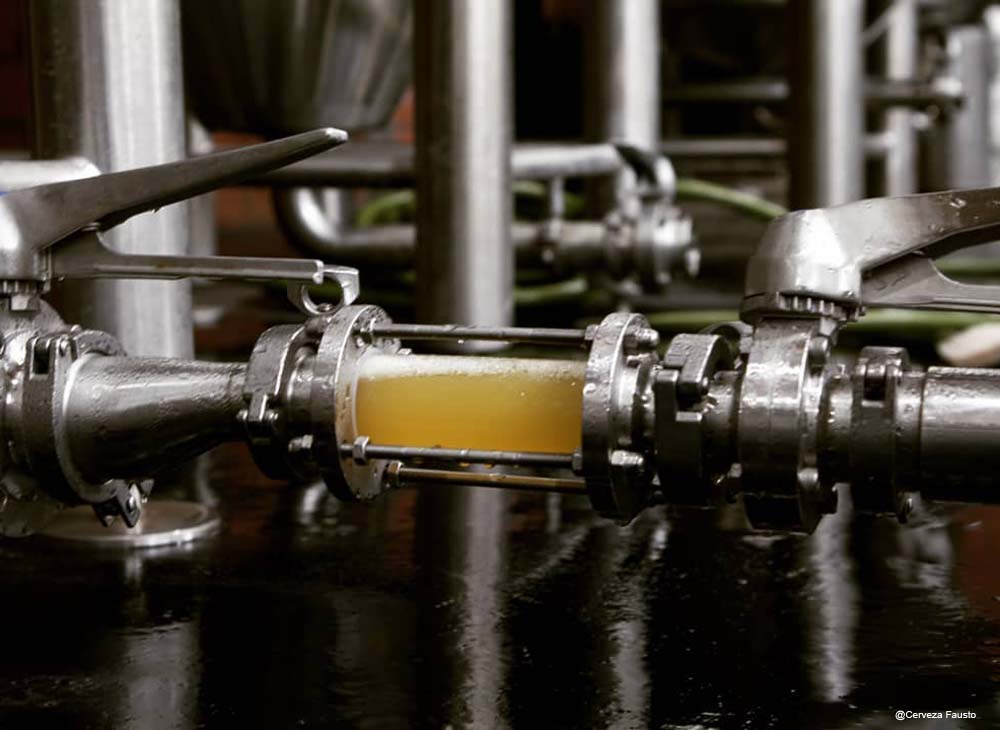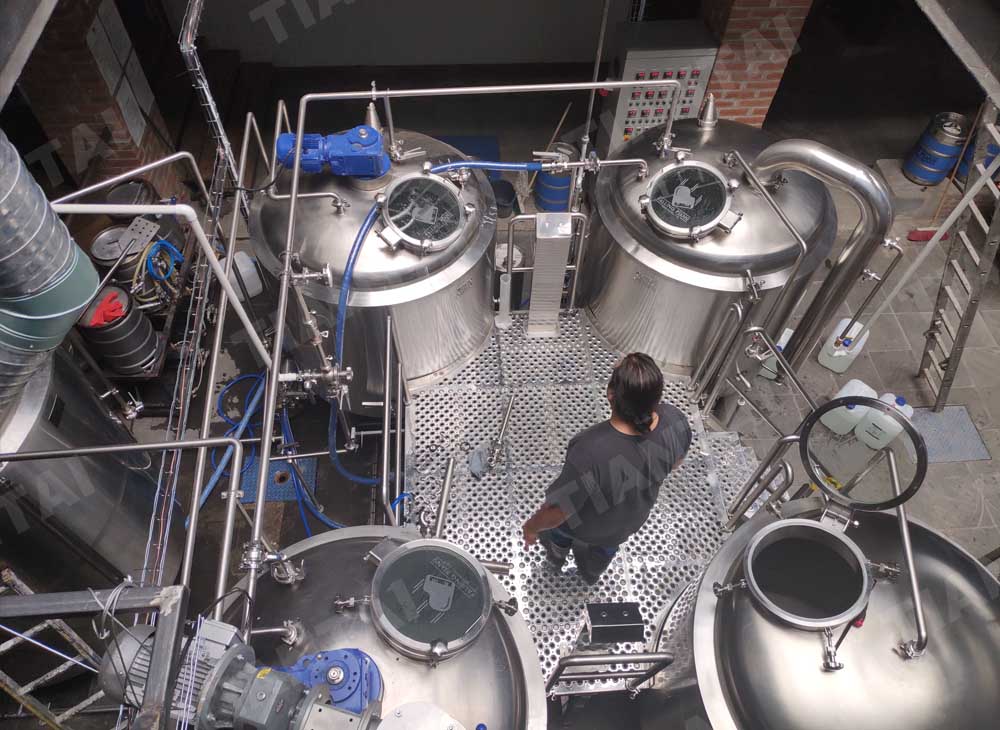Step-by-step process of brewing beer
- Apr 27, 2021
- 98
- tiantai
Most of us love beer, while few of us know exactly how it’s made. We, Tiantai company is a brewery equipment manufacturers, we break down the brewing process into its most basic components.

Here's every step to start brewing beer, from breaking down the malt to shipping the final product.
Step 1: Milling the grain
Beginning In the brew house, different types of malt are crushed together to break up the grain kernels in order to extract fermentable sugars to produce a milled product called grist.
Step 2: Mash Conversion
The grist is then transferred into a mash tun, where it is mixed with heated water in a process called mash conversion. The conversion process uses natural enzymes in the malt to break the malt’s starch down into sugars.
Step 3: Lautering
The mash is then pumped into the lauter tun, where a sweet liquid (known as wort) is separated from the grain husks.
Step 4: The boil
The wort is then collected in a vessel called a kettle, where it is brought to a controlled boil before the hops are added.
Step 5: Wort separation and cooling
After boiling, the wort is transferred into a whirlpool for the wort separation stage. During this stage, any malt or hop particles are removed to leave a liquid that is ready to be cooled and fermented.
Step 6: Fermentation
To start the fermentation, yeast is added during the filling of the vessel. Yeast converts the sugary wort into beer by producing alcohol, a wide range of flavors, and carbon dioxide (used later in the process to give the beer its sparkle).
Step 7: Maturation
After fermentation, the young “green” beer needs to be matured in order to allow both a full development of flavors and a smooth finish.
Step 8: Filtration, carbonation, and cellaring
After reaching its full potential, the beer is filtered, carbonated, and transferred to the bright beer tank, where it goes through a cellaring process that takes 3-4 weeks to complete. Once completed, the beer is ready to be packaged.
Edited by Derrick
[email protected]
Tiantai Equipment

Here's every step to start brewing beer, from breaking down the malt to shipping the final product.
Step 1: Milling the grain
Beginning In the brew house, different types of malt are crushed together to break up the grain kernels in order to extract fermentable sugars to produce a milled product called grist.
Step 2: Mash Conversion
The grist is then transferred into a mash tun, where it is mixed with heated water in a process called mash conversion. The conversion process uses natural enzymes in the malt to break the malt’s starch down into sugars.
Step 3: Lautering
The mash is then pumped into the lauter tun, where a sweet liquid (known as wort) is separated from the grain husks.
Step 4: The boil
The wort is then collected in a vessel called a kettle, where it is brought to a controlled boil before the hops are added.
Step 5: Wort separation and cooling
After boiling, the wort is transferred into a whirlpool for the wort separation stage. During this stage, any malt or hop particles are removed to leave a liquid that is ready to be cooled and fermented.
Step 6: Fermentation
To start the fermentation, yeast is added during the filling of the vessel. Yeast converts the sugary wort into beer by producing alcohol, a wide range of flavors, and carbon dioxide (used later in the process to give the beer its sparkle).
Step 7: Maturation
After fermentation, the young “green” beer needs to be matured in order to allow both a full development of flavors and a smooth finish.
Step 8: Filtration, carbonation, and cellaring
After reaching its full potential, the beer is filtered, carbonated, and transferred to the bright beer tank, where it goes through a cellaring process that takes 3-4 weeks to complete. Once completed, the beer is ready to be packaged.
Edited by Derrick
[email protected]
Tiantai Equipment

.jpg)


